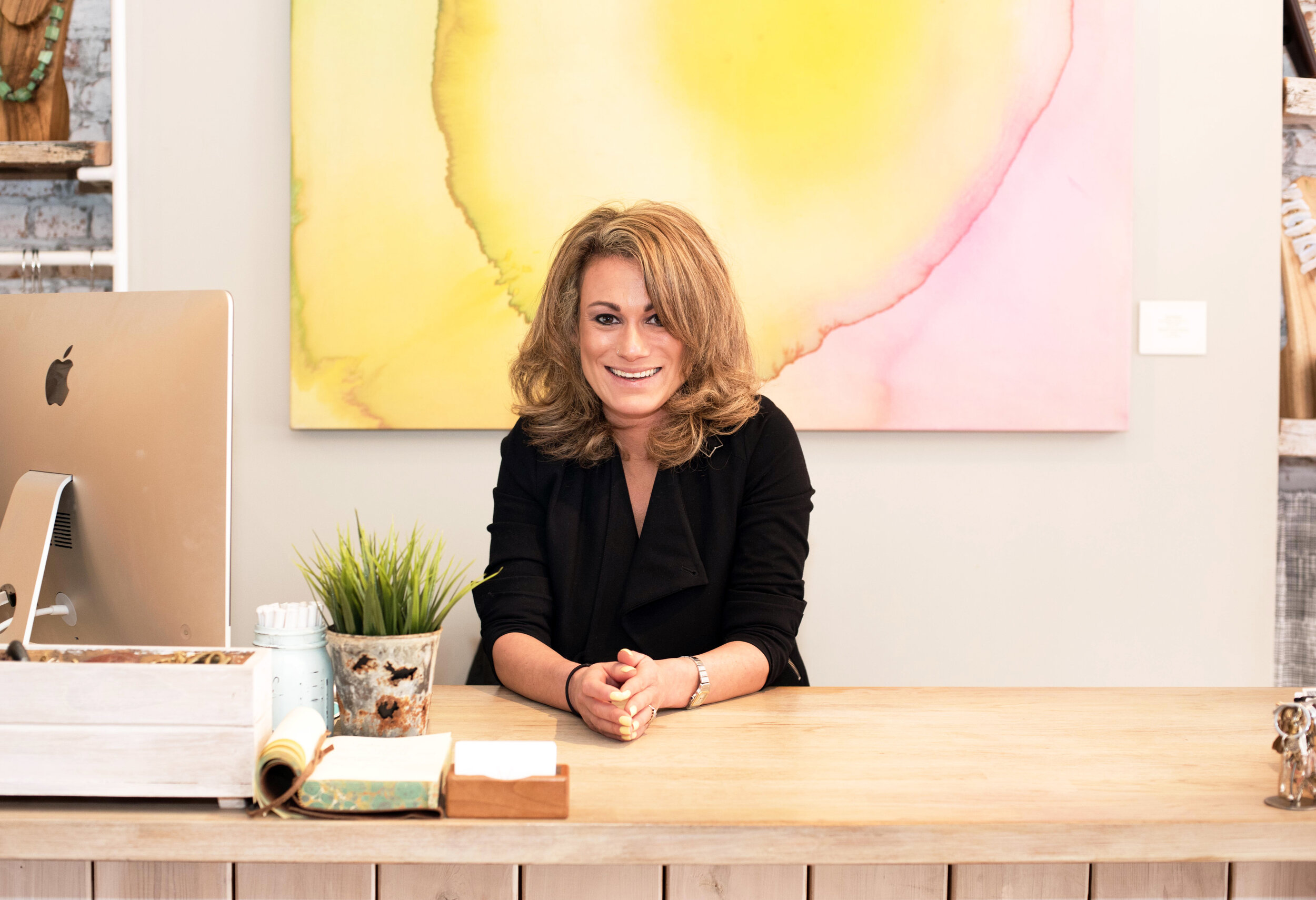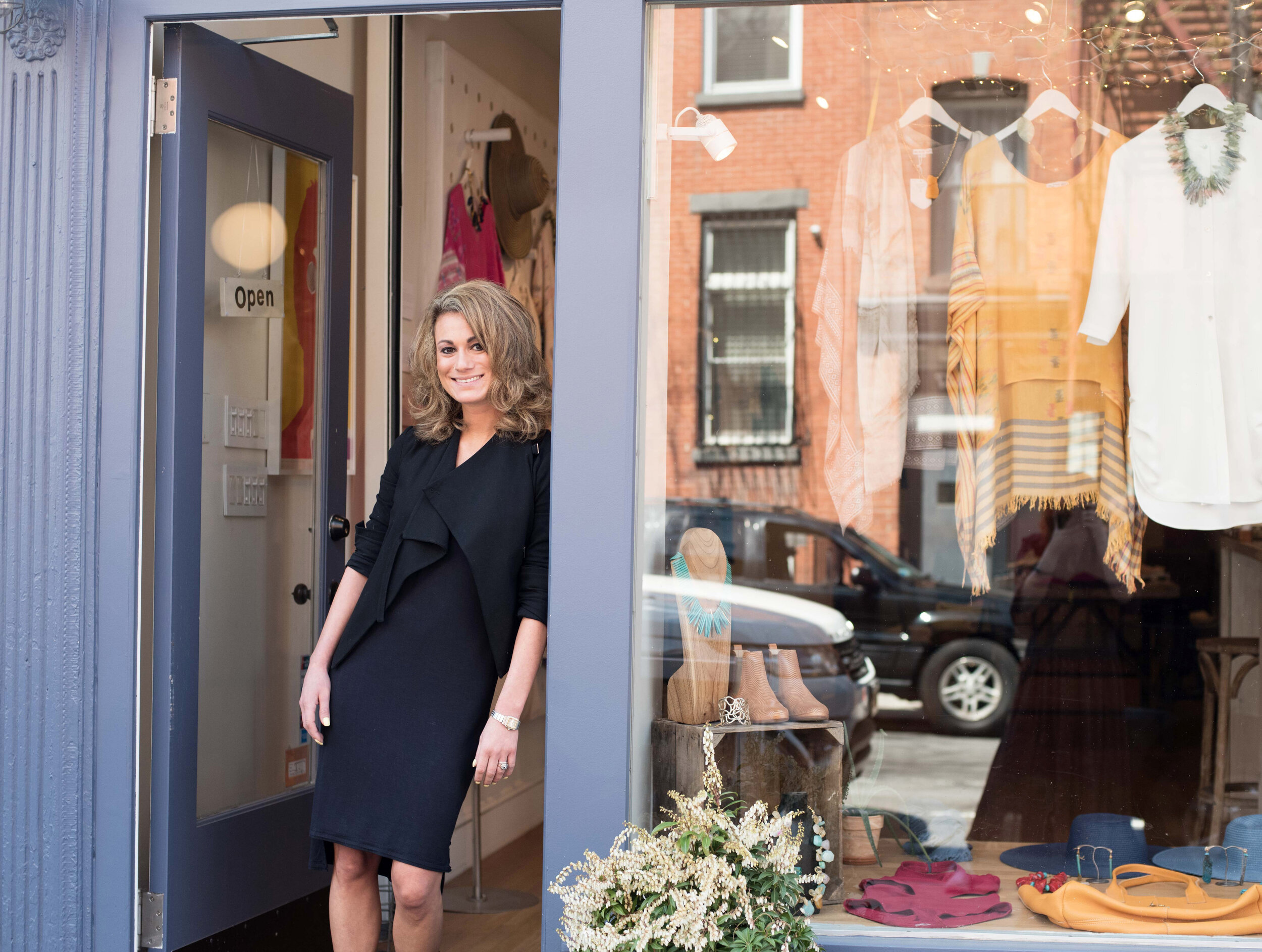Vanessa Vallarino
A passion for textiles and design led Vanessa Vallarino into fashion. But sometimes, the reality of an industry is much different than what we imagine. After years of trial and error, Vallarino has re-invented her dream on her own terms, creating a thriving business that allows her to share her knowledge with other talented designers.
May, 2017
You are a born and bred New Yorker.
I am. I was born in Manhattan, but I was raised in Millbrook, Dutchess County.
Did you always plan to move back to the city?
I did a bit of moving around before settling back here. I went to university in Savannah and studied fashion and graphic design. But obviously, if you want to be in fashion, then there are really only two cities where you can live: New York or LA. I chose to come back to New York because my family was here. And, at the time, there just seemed to be more going on here.
Why did you choose to study in Savannah? I’ve always wanted to go there.
Savannah College of Art and Design was the only school I got into. [Laughs] Also, I really hate winter. I did a summer program at RISD when I was in high school, and wasn’t a fan of Rhode Island, then I worked at Parsons for a while and wasn’t a fan, either. At the time, Savannah College of Art and Design was becoming very renowned, it was a smaller scale school, and Savannah is absolutely gorgeous while also being affordable. I lived there for five years because I did a double major. Once I graduated, I got a job as a textile designer and fashion forecaster at Li & Fung, which is a huge maker of consumer products.
Can you explain fashion forecasting?
Basically, you are predicting trends that are going to be in fashion in the upcoming seasons. Fashion works in such a strange cycle—right now in Spring 2017, we’re designing for Fall/Winter 2018. So when I was doing fashion forcasting, I would do a lot of research into trends, color stories, designers, and watching what was happening on the runways. I would compile everything into presentations and give them to our clients.
So they can then design things that will be on trend for the following year.
Exactly. At the time I also specialized in textile design, which means I would design all the prints that would go into the fabrics for our accounts. We worked with everyone: Macy’s, Bloomingdale’s, Target, Walmart, Converse.
It’s always amazing to hear how connected all these companies are, and how they’re really just large corporations.
Yes. For instance, Converse would say they wanted us to create a color story that would appeal to a certain age group. We would do the research and present them with the colors, and they start designing specifically to appeal to that demographic.
In fashion school, they don't teach you that. They tell you, "Be as creative as you can, create the most avant-garde thing.” But most of what you do is very corporate a lot of the time. You are creating things that fit within a very narrow and specific field. I don’t want to say working there ruined fashion a bit for me, but in a way it did.
After four and a half years, I quit my job to start my own line. I will always be grateful for the opportunities that I had in that first job out of university. It taught me so much about the industry, and I wouldn’t be where I was without it. I just needed to try to see if I could do my own thing.
What was that experience like after four years in a corporate environment?
It was hard. It was really hard. I had a business partner at that time, and we rented a little studio in Gowanus. She was also a graduate of SCAD, and she came on board because she knew all about the production side of things, which isn’t my strong suit.
We were both at the same point where all we wanted to do was reclaim what we thought fashion should be: unique, expressive, creative. We just started designing things, but that was its own learning curve. We made every mistake in the book.
What sort of stuff were you designing?
Our first collection was all clothing that was eco-friendly and versatile. We wanted women to be able to get more than one look out of each piece. But what it actually turned out to be was overly complicated and hard to understand. The buyers would be like, "What? I don't understand this." Our clothing was more sculptural than it was wearable.
Not good for a new business!
Yes. Especially as we were working with buyers. They aren’t going to take the time to listen to you explain all the ways you can wear something. They need to be able to understand it straight away.
So our first collection wasn't completely successful. But, with fashion you have to constantly keep designing. You're done with one sample set, then you go to trade shows, do line sheets, create look books, and repeat the process all over again. We did this all on our own for about four years. We made so many mistakes. It look us so long to figure out who our demographic was, what our price point should be, what fabrics we should be using for what seasons.
The whole process is so expensive; just going to trade shows for three days can cost thousands of dollars. Especially if buyers don’t respond to what you are making. We learned more with each collection we did, but it was brutal. After getting scammed by a wholesaler on a really big order, I reached a breaking point. I couldn’t do it any more.
“The work is on me—it’s my responsibility to make things happen.”
What happened with the wholesaler?
They placed a huge order, but then once it was all ready to go they never paid us. So we were stuck with all these clothes and no way to sell them. That was the first time the idea of having a shop came into my mind. I had the idea of selling all these clothes at a pop-up shop.
We were excited by the opportunity to deal directly with customers. Initially, we thought the only way to work in fashion was to work through buyers and showrooms. You design, you deal with showrooms, you have sales reps, you have road reps, you have to make all these samples for every single showroom that you deal with, because you want East Coast, West Coast, and everywhere covered. And, they're not paying for it, and then, your stuff is just in a showroom, you don't know what's happening to it. To sell directly to people was really different.
First, we rented a space. Then, I started going through my SCAD roster and reaching out to people who were designing accessories and jewelry so we could fill out the space with more variety.
In that one month, we profited more than two years of wholesale.
Wow!
It was a wake-up call. Even just seeing the customers who were actually buying our clothing. We always thought we were designed for 20-35 year olds, but really the women buying were a little older. They were responding to the designs we had, and women who are older also have more disposable income. Not many 25-year-olds can afford a $350 blouse.
It was really nice to interact with people. As a designer, we all get very stubborn because we do things the way that we picture it, but at the end of the day, you want to make money and you want to become successful, and this experience allowed us to actually grow. So, we extended the lease for another month, and it continued to go really well. The pop-up was really the start of this store. After two months at the pop-up, I officially quit wholesale completely. At that time, my business partner and I also went our separate ways.
With everything I had learned, and all the hard lessons, I wanted to create a shop and a business that would help other designers who were starting out. I wanted to provide a space where they can test designs without having to go into a huge production run.
So V Curated is a space that you wish you had when you started?
Yes. My designers basically pay a monthly fee to be in the store, and in return, they get different services and help. We do everything from CAD drawings to handling Instagram accounts.
In the beginning, a lot of people asked me why anyone would pay to be in a store. How could this work? But I was like, "Listen, you haven't been in my shoes, you don’t know the amount of money I gave to consultants who never helped, or the money and time I spent on trade shows.” I could have bought a house with that money! I can give this knowledge to other people. I work with my designers at every stage.
How do you find the designers for the store?
I just sit and research! I try to think about what our customers like, and what they are looking for. I look for designers with passion and drive. It’s been three years since I opened the store, and it’s been amazing.
It's always been a dream of mine to have a store. I also still have my own line, but I just design when I want to design.


What’s been the biggest challenge?
Retail is hard. Especially in Brooklyn, where it’s so expensive. The overhead is crazy. So the stress of making rent is 100 percent on me.
It’s also stressful choosing the clothing and designers for the store. You can’t get into the trap of simply choosing things you like. I have to be confident enough to choose things that might not be my style but would appeal to my customers and demographic. I've gotten more confident in that regard. The store is not known for your typical basics; it’s not for everyone. But it’s slowly becoming known for the type of things I carry.
What’s the best piece of advice you could give?
My father has always told me that I could do anything, but that I was going to have to be the one to get it done. It’s great motivation. The work is on me—it’s my responsibility to make things happen. That’s been really valuable now that I’m working for myself. I constantly have to stay motivated, because no one is going to do that for me.
What does New York mean to you?
Constant inspiration—and, on the other hand, struggle. And a lot of hustle!
Photography by Stephanie Geddes ©


